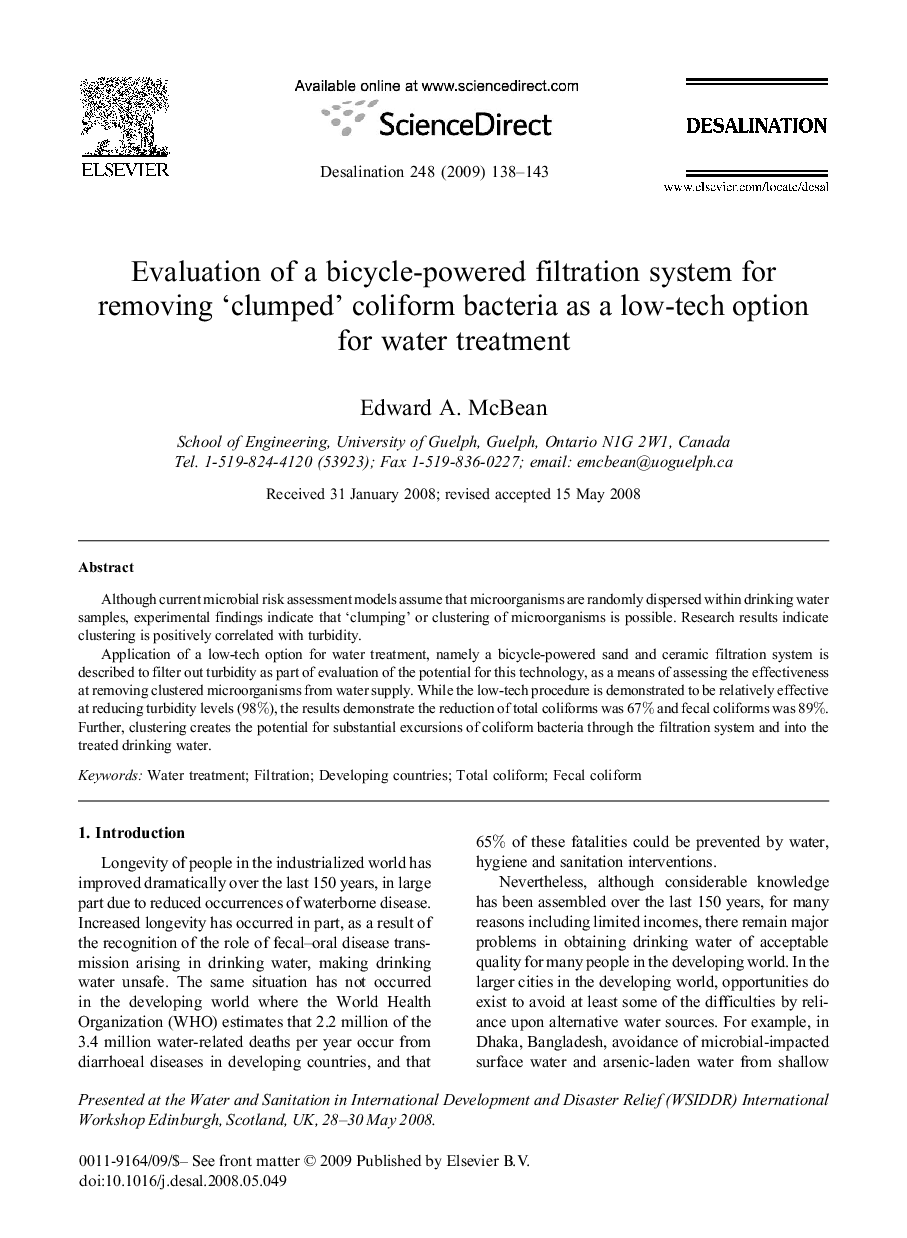| Article ID | Journal | Published Year | Pages | File Type |
|---|---|---|---|---|
| 626361 | Desalination | 2009 | 6 Pages |
Although current microbial risk assessment models assume that microorganisms are randomly dispersed within drinking water samples, experimental findings indicate that ‘clumping’ or clustering of microorganisms is possible. Research results indicate clustering is positively correlated with turbidity.Application of a low-tech option for water treatment, namely a bicycle-powered sand and ceramic filtration system is described to filter out turbidity as part of evaluation of the potential for this technology, as a means of assessing the effectiveness at removing clustered microorganisms from water supply. While the low-tech procedure is demonstrated to be relatively effective at reducing turbidity levels (98%), the results demonstrate the reduction of total coliforms was 67% and fecal coliforms was 89%. Further, clustering creates the potential for substantial excursions of coliform bacteria through the filtration system and into the treated drinking water.
